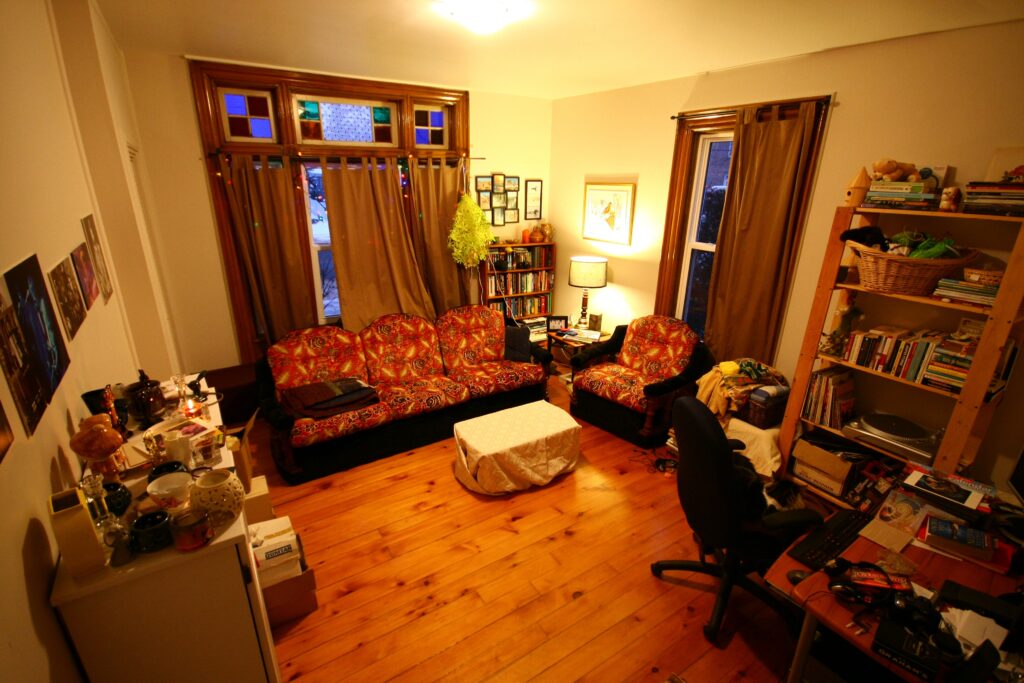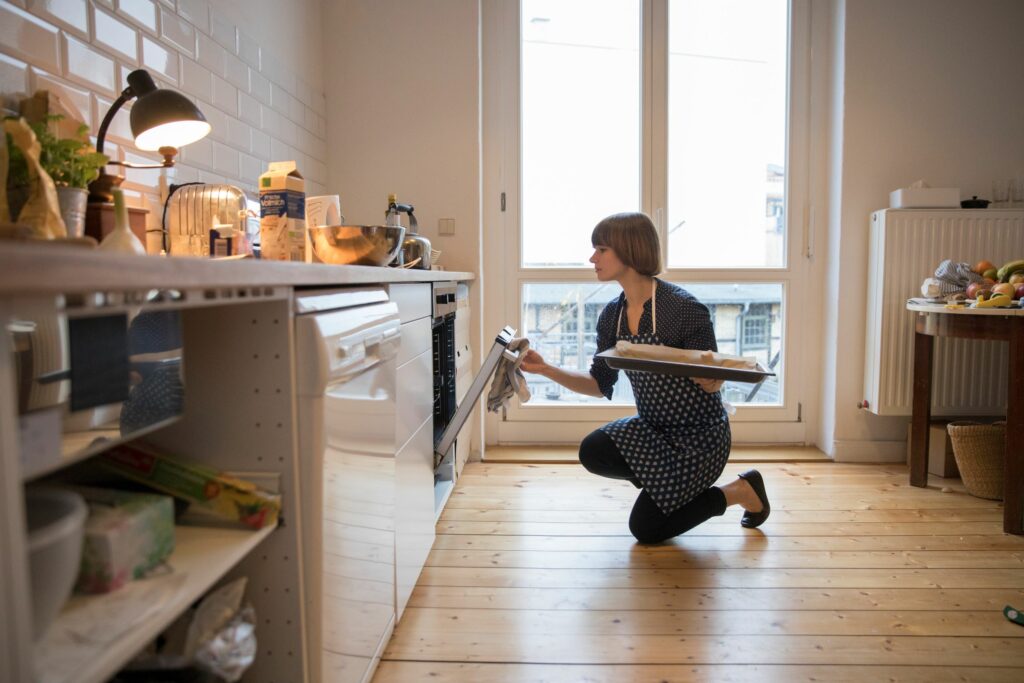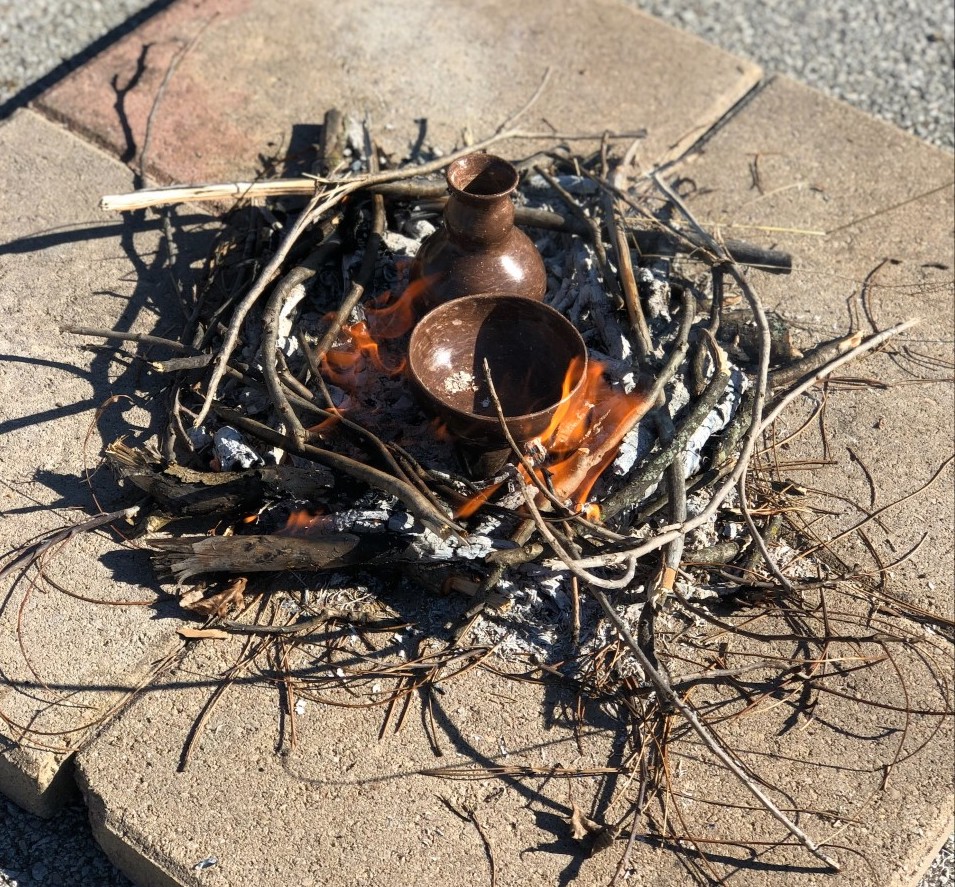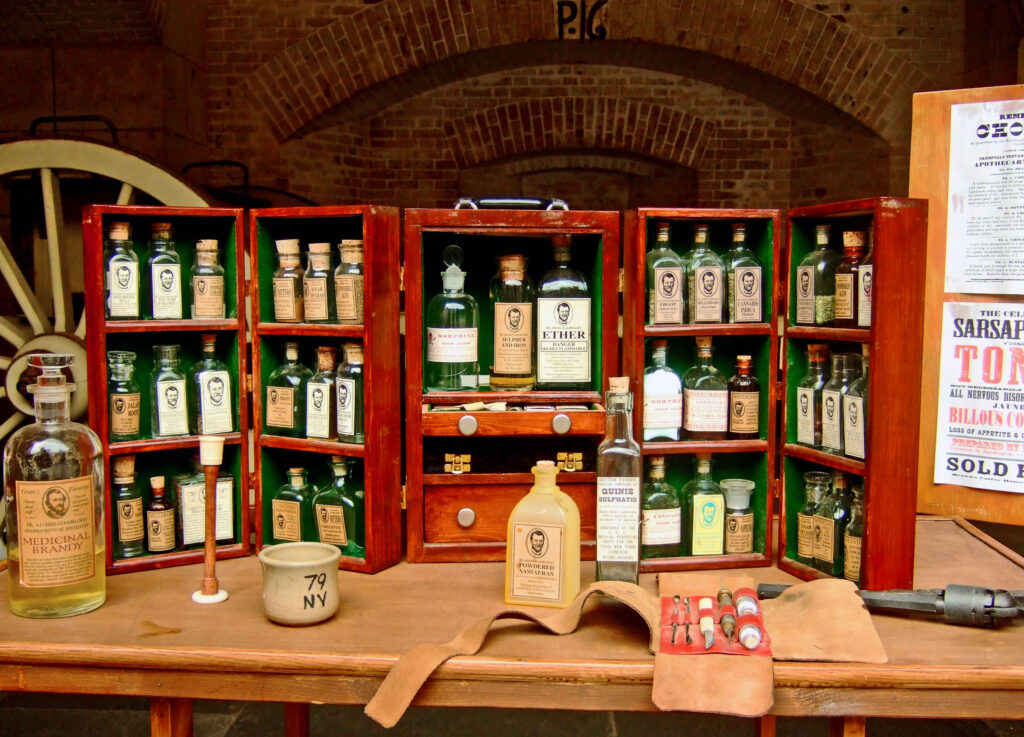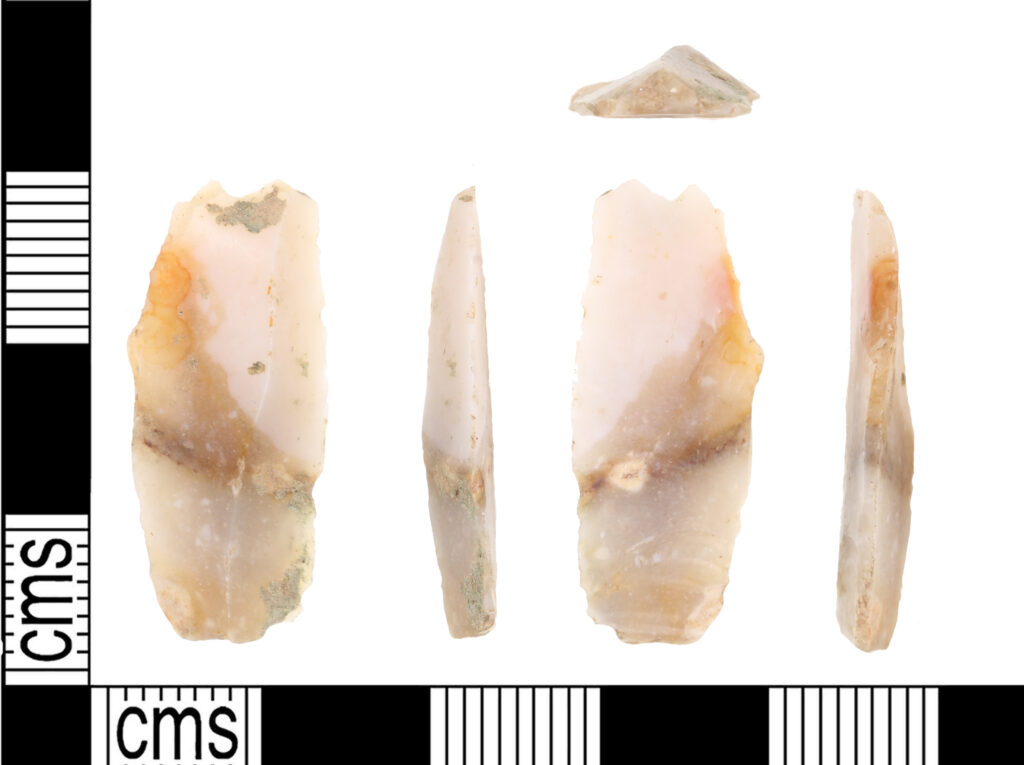Finding Mental Health Issues Hidden in the Past

Hi, my name is Paige, and I have generalized anxiety and panic attack disorders.
According to our lord and savior WebMD, generalized anxiety disorder (GAD) means I have an “excessive, exaggerated anxiety and worry about everyday life events for no obvious reason” and “tend to always expect disaster and can’t stop worrying about health, money, family, work, or school.”
When I think and worry to excess, it sometimes causes panic attacks. This disorder presents as episodes of intense fear that trigger physical reactions such as increased heart rate, numbness, or tingling sensations, plus emotional detachment.
Along with my mental health disorders, I am also an archaeologist and a giant nerd. This means I’ve spent some time musing about whether and how people in the past may have experienced and coped with similar mental health issues.
Unfortunately, panic attacks don’t fossilize, and anxiety and depression don’t leave imprints on pottery (at least not directly). This lack of obvious physical evidence can give people the impression that past people were completely able-bodied and able-minded. But that can’t be true, can it?
What if we used our own and others’ experiences to reinterpret ancient objects and the bodies and minds that made them? What potential material marks of “invisible” struggles could we see? And how can researchers reframe our methods and perspectives to capture the hidden mental health experiences of past people?
ARCHAEOLOGY ALREADY INTERPRETS THE INVISIBLE
Speculating about how ancient people would have felt or viewed the world probably gives some folks the heebie-jeebies. And they’d be right to be skeptical.
Re-imagining past people’s mental states through a lens of modern psychology is controversial. How can we tell how they felt? Should we even try? What about our modern biases?
These questions are, in my mind, some of the reasons we should try to speculate. If the experiment fails, it fails! Just like any science experiment, not all archaeological investigations prove worthy of replication.
All caveats aside, archaeologists already use this approach to a certain extent. While archaeology seems to be concerned with what can be seen (that is, objects and features on the landscape), archaeologists spend most of our time using those things to describe the unseen aspects of people’s lives and worldviews.
Objects can tell stories. If you look around your room, I can almost guarantee there is a thing you can hold, touch, smell, or lick that tells a story about an experience, a memory, or who you are as a person. For instance, looking to my left right now, there is a crocheted blanket draped over a chair that, if given a chance, can tell a story of me coping with my anxiety. I’ll come back to that blanket later.
Say an archaeologist comes into your home and documents everything there. You can bet your bottom dollar they could interpret how you live your life and even ascertain a bit about your values and worldview using anthropological theories. Maybe you have a certain aesthetic of décor or a set of heirlooms you inherited from a relative that reveals a bit about your family. Maybe there is something that communicates what you do for a living or a religious or spiritual object that offers clues about your belief systems. Heck, archaeologists can even look in your trash to interpret something from that!
But what about our biases, Paige?, you might ask. It seems like a slippery slope to interpret things about mental health and neurodivergence from objects!
Well, biases are, of course, rampant in the social sciences. This is one of many reasons there are calls to diversify our fields. Increasing the representation of different ethnicities, gender identities, abilities, and neurodiversities, for example, allows for more vibrant (and ultimately, more accurate) interpretations of human activity, past and present.
Really, our interpretations are already incredibly biased since we only have part of the story—a narrative told mostly by able-bodied and able-minded Euro-American men. And as a woman in archaeology with two mental health disorders impacting the way I interact with the world around me, I would at least like to see if there are ways we can elevate the idea that neurodivergences likely existed prior to European contact in various parts of the world.
Operationalizing a perspective that discusses generalized anxiety and other mental health disorders without interpreting history through the lens of our own emotions is a difficult balance to strike. It will take time and experimentation. We won’t get it perfect on the first go. But the discussion needs to happen. Emotions and mental health disorders are diverse and wide-ranging, much like other human behaviors we already focus on.
So, let’s give it a shot.
FINDING COPING STRATEGIES IN ARCHAEOLOGICAL OBJECTS
Archaeologist Jeffrey Fleisher and anthropologist Neil Norman recently discussed the archaeologies of anxiety, and I think they hit the nail on the head when they state, “the senses—what we see, smell, hear, and feel—matter in the constitution and reconstitution of social and cultural life.”
But where could we begin to reconstitute emotional life in pre-European contact contexts? What would the material markers of anxiety and depression be?
Using my experiences with GAD and panic attacks, and my archaeological expertise, as a guide, I have a few thoughts.
My anxiety and panic attacks do not generate material signatures on their own. No skeletal markers show up, and my GAD and attacks themselves don’t “make” anything we can see. I think the key lies in understanding the many coping strategies for anxiety and depression.
The blanket I mentioned earlier is the direct product of one of my anxiety coping strategies. I picked up crochet when I was first diagnosed a decade ago. It is an activity that connects me to my family, since I grew up among fabric artists. Crochet helps occupy my hands and my anxious mind because I must pay attention to counting stitches and following or developing a pattern. This takes my attention away from whatever flavor of anxiety I have that day, and it has on many occasions prevented panic attacks.
I have other coping strategies as well such as weightlifting, eating healthy, and identifying my triggers. But if I’m putting my archaeologist hat on, crochet is the only thing I do that really leaves a material signature. Or, rather, it is the one I choose to focus on for the purposes of this discussion. So, the physical evidence is the blanket itself, as well as the tools that made it, such as the crochet hook, the stitch markers, the scissors, and a tapestry needle.
This really isn’t a revelatory insight. Art has been used throughout history to express intense emotions. Classes are devoted to art therapy to help folks cope with depression and anxiety. So, it’s possible to make nuanced interpretations of artwork and the tools of the artistic trade, which can be reflective of an individual’s worldview and coping strategies.
Also, coping strategies aren’t limited to more traditionally defined arts like painting and pottery. Some folks may find the acts of baking and cooking particularly calming—slicing, stirring, and smelling delicious foods can be therapeutic. Even modern flintknappers may feel that way about their craft.
This is my way of easing into the idea that coping strategies have their own material toolkit that could be seen archaeologically in the process and the product. Now, before anyone calls the archaeology police, I’m not saying we should disregard archaeological interpretations that deem things like ceramic fine wares or other specialized crafts as ritually significant. It is also not my intent to argue that ancient people had the same mental health struggles as contemporary people. And I’m not suggesting every cooking vessel or knife is linked to mental-health coping strategies.
All I am doing is musing about possibilities for expanding our understanding of the nuances of these objects’ histories as they were made and used by past people. Things like shell cups engraved with iconographic cultural heroes are clearly ritually significant. But is that the whole story? I think it behooves us to see what else objects can show us about the people who made them.
SIGNATURES OF MENTAL HEALTH AND NEURODIVERSITY IN ARCHAEOLOGY
As an example of looking for this nuance, I think about my friend and colleague Shawn Lambert’s archaeological work on early Caddo ceramic fine wares (made about 1,000 years ago) found in the Arkansas River Valley. Caddo pottery is some of the most finely crafted pottery in the Southeastern United States. The walls are impossibly thin, and the engraved decorations are difficult to implement without training and experience.
Lambert analyzed the designs on the engraved patterns and used a technique called neutron activation analysis, which measures the chemical elements in objects to help determine where they were manufactured. Through these methods, Lambert illustrated that these vessels were specialized productions, and the knowledge of how to produce them was restricted to a small group of ceramic artisans. The pots were ritually significant, but the fact that only a handful of artists likely produced them is curious. Their specialization in the craft is likely due to their religious charge and the experience needed to make these intricate vessels. But could there be more to the story for those individual potters?
I think it is interesting to ponder whether looking closely at examples of artistic specialization and expression is one way we can see coping strategies for anxiety and depression in the past. My blanket, ceramic fine wares, paintings, other specialized crafts, and the tools used to make them all could be reflections of more than just ritual significance.
Ritual acts surrounding death, such as burial, are also charged with emotions. Those of us who have experienced the death of someone close to us or a pillar in our community know that their passing can generate days, weeks, even months of emotional turmoil. Sometimes these emotions manifest and trigger latent panic attacks.
So, as Fleisher and Norman point out, researchers are no longer concerned only with the acts of burying one’s loved ones, but also with the angst that arises in those moments. They note that certain highly structured and routinized burial ceremonies “can be viewed as a strategy to reduce anxiety by controlling chaos through prescribed, formalized, and invariant ritual practices.”
In addition, the researchers in Laurie A. Wilkie’s article “Imagining Archaeologies Without Ableism” show the possibilities of using archaeology to identify various physical and mental disabilities in the past. For example, bottles of certain medicines found in post–Civil War hospitals may be evidence of undiagnosed post-traumatic stress disorder among Black soldiers.
Other researchers are looking for material signatures of neurodiversities. For instance, Penny Spikins is investigating evidence for autism in the archaeological record. She suggests that autistic perspectives manifest as things like “a unique focus on detail, technological innovation, and understanding of complex systems.” Using this view as her guide, Spikins argues that early innovations such as microlith technology may have been developed by people with autistic minds.
Such disability scholars in archaeology advocate for researchers to look for diverse identities further into the past—if we can just find the material evidence. While much more research is needed to broaden these interpretations, the takeaway should be that human beings in the past were much more mentally diverse than we have been able to capture up to this point.
I hope we all agree that humans—past and present—aren’t automatons who are only concerned with gathering resources. I definitely don’t see myself as a kind of robot with no emotions or beliefs (though sometimes that feels like it would be quite convenient, especially as a sufferer of anxiety disorders).
As such, I think it is a next logical step for us to search for alternative and multifaceted interpretations of archaeological contexts—in some ways informed by our own experiences—that help us diversify our understanding of the human experience. If we look hard enough, we are certainly equipped and capable to make the invisible visible again.

































